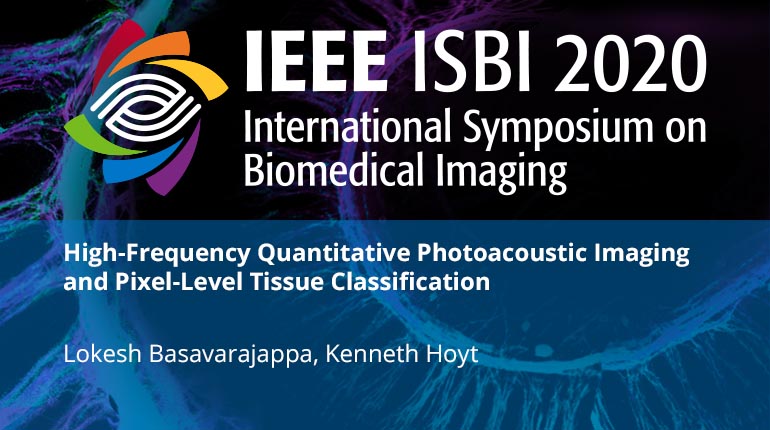
Already purchased this program?
Login to View
This video program is a part of the Premium package:
High-Frequency Quantitative Photoacoustic Imaging and Pixel-Level Tissue Classification
- IEEE MemberUS $11.00
- Society MemberUS $0.00
- IEEE Student MemberUS $11.00
- Non-IEEE MemberUS $15.00
High-Frequency Quantitative Photoacoustic Imaging and Pixel-Level Tissue Classification
The recently proposed frequency-domain technique for photoacoustic (PA) image formation helps to differentiate between different-sized structures. Although this technique has provided encouraging preliminary results, it currently lacks a mathematical framework. H-scan ultrasound (US) imaging was introduced for characterizing acoustic scattering behavior at the pixel level. This US imaging technique relies on matching a model that describes US image formation to the mathematics of a class of Gaussian-weighted Hermite polynomial (GWHP) functions. Herein, we propose the extrapolation of the H-scan US image processing method to the analysis of PA signals. Radiofrequency (RF) PA data were obtained using a Vevo 3100 with LAZR-X system (Fujifilm VisualSonics). Experiments were performed using tissue-mimicking phantoms embedded optical absorbing spherical scatterers. Overall, preliminary results demonstrate that H-scan US-based processing of PA signals can help distinguish micrometer-sized objects of varying size.
The recently proposed frequency-domain technique for photoacoustic (PA) image formation helps to differentiate between different-sized structures. Although this technique has provided encouraging preliminary results, it currently lacks a mathematical framework. H-scan ultrasound (US) imaging was introduced for characterizing acoustic scattering behavior at the pixel level. This US imaging technique relies on matching a model that describes US image formation to the mathematics of a class of Gaussian-weighted Hermite polynomial (GWHP) functions. Herein, we propose the extrapolation of the H-scan US image processing method to the analysis of PA signals. Radiofrequency (RF) PA data were obtained using a Vevo 3100 with LAZR-X system (Fujifilm VisualSonics). Experiments were performed using tissue-mimicking phantoms embedded optical absorbing spherical scatterers. Overall, preliminary results demonstrate that H-scan US-based processing of PA signals can help distinguish micrometer-sized objects of varying size.
 Cart
Cart Create Account
Create Account Sign In
Sign In





